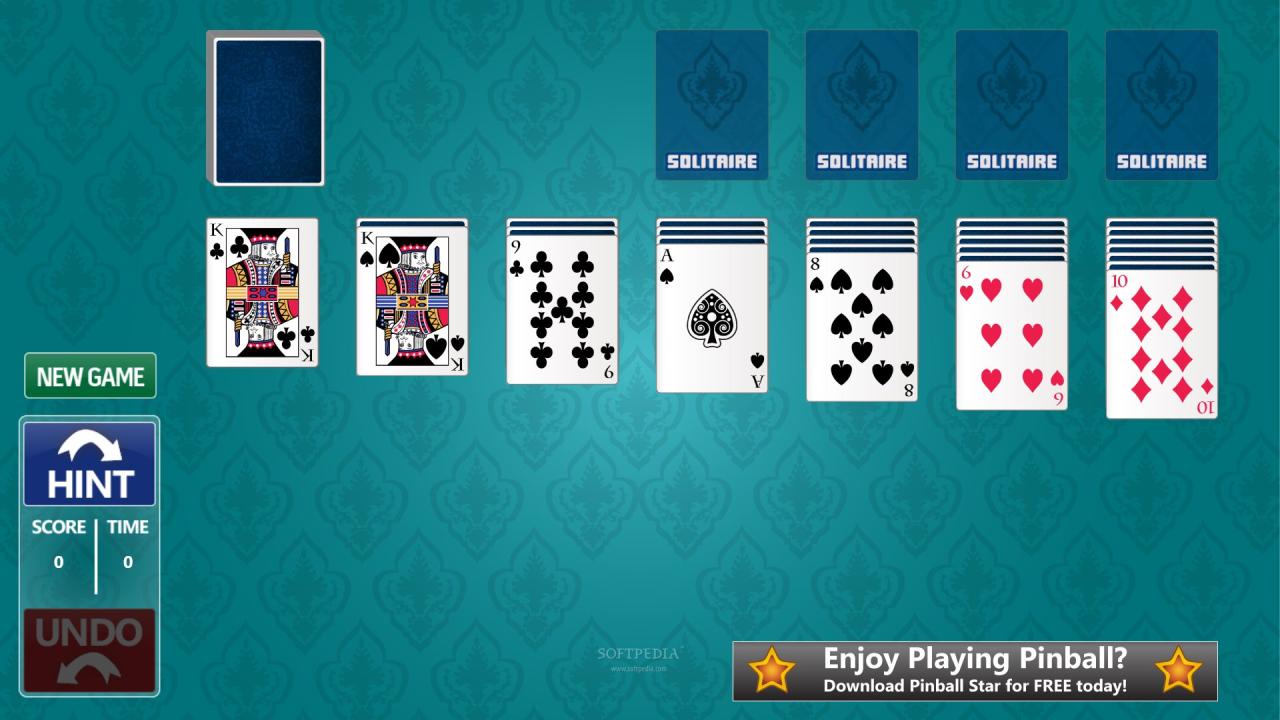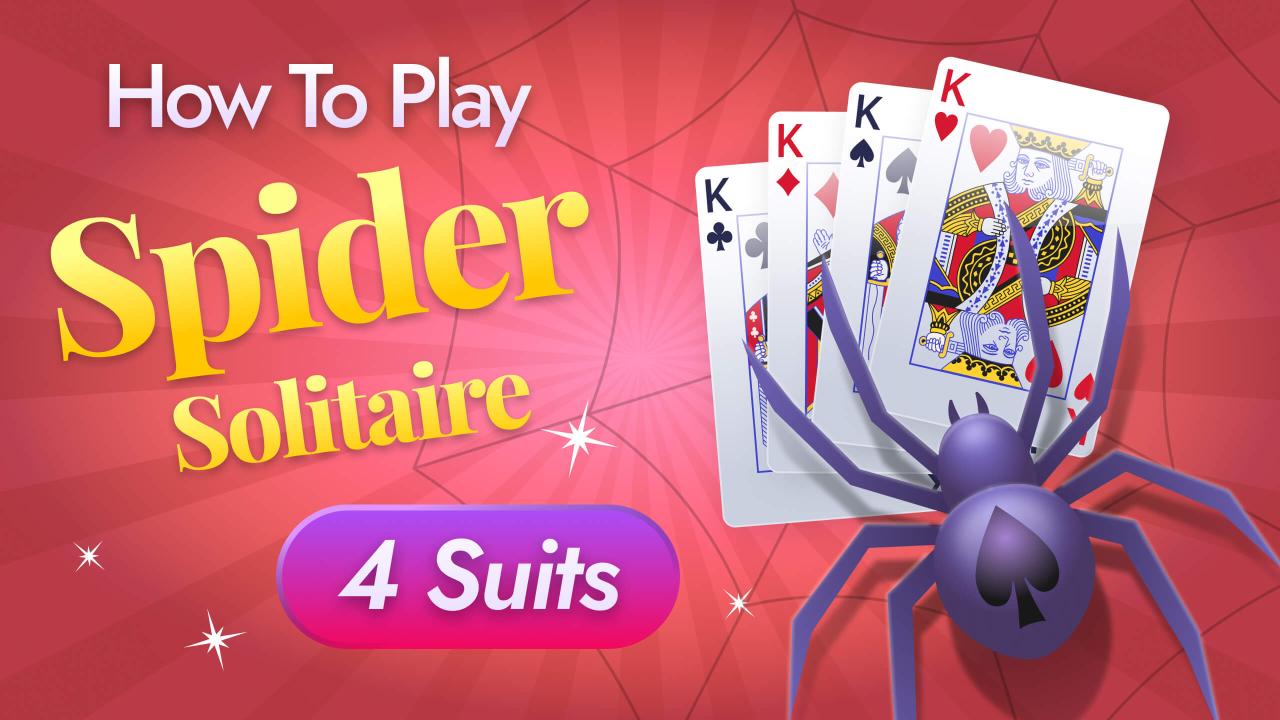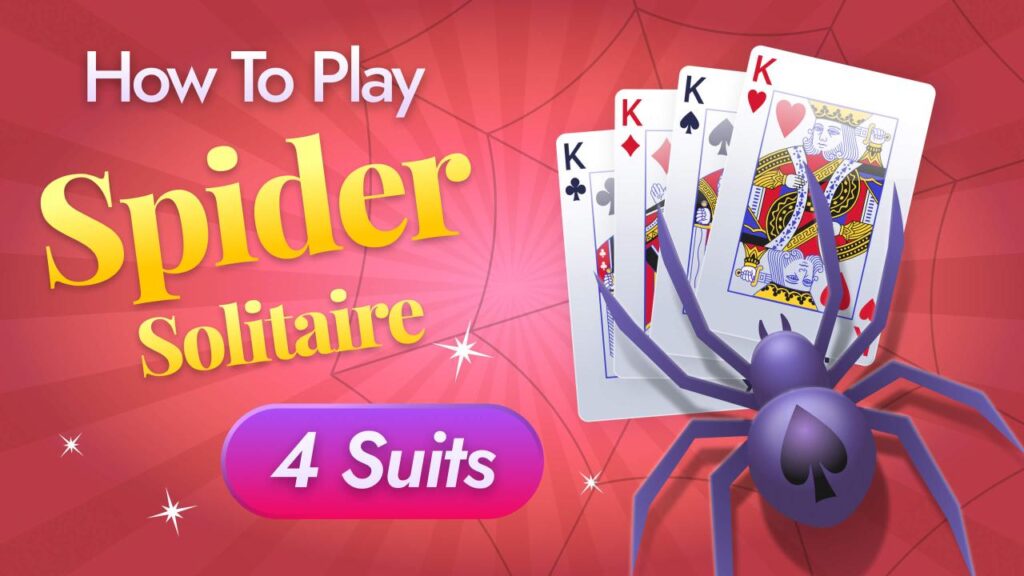solitaire spider sets the stage for an exciting journey into the world of card games, where strategy and skill combine to create a thrilling experience. This popular variation of Solitaire requires players to form eight complete sets of cards in descending order and is played with two decks of cards, making it both challenging and rewarding. As we explore the rules, variations, and essential tips for success, you’ll discover how to optimize your gameplay and overcome common obstacles that many players face.
Understanding the rules and setup is crucial to enjoying solitaire spider, as each game presents unique challenges. Whether you are a beginner looking to learn the ropes or an experienced player seeking to refine your skills, this guide will cover everything you need to know, from effective strategies for managing your tableau to the best ways to utilize the stockpile during play.
Overview of Solitaire Spider

Solitaire Spider is a captivating card game that challenges players to strategize and organize cards in a single suit to create a complete foundation. It’s a variant of the classic Solitaire, popular for its complexity and depth. The objective is to clear the tableau by building sequences from King to Ace, ultimately leading to victory.
In Solitaire Spider, the game employs two decks of standard playing cards, resulting in a total of 104 cards. The gameplay involves managing multiple piles, making it a unique blend of skill and luck. Players must not only focus on the immediate moves but also think ahead to ensure optimal play as they work toward achieving complete ordered sequences.
Rules and Objectives of Solitaire Spider
The primary rule of Solitaire Spider is to arrange cards in descending order from King to Ace within the same suit. The game starts with eight piles of cards, four of which are dealt face-up, while the others are placed face-down. Players can move cards between piles and may draw from the stockpile to help them progress. The ultimate objective is to eliminate all cards from the tableau by forming complete sequences.
The following Artikels the fundamental rules:
- A player can only move the top card of a pile.
- Cards can be stacked in descending order, but only in the same suit.
- If a pile is empty, only a King can be placed in that space.
- Players can draw from the stockpile when no other moves are available.
Variations of Solitaire Spider
Solitaire Spider offers several variations that alter the gameplay experience. These variations may include differences in the number of suits used or rules about drawing cards. The most common variations include:
- Spider One Suit: Only one suit is used, making it easier to form sequences.
- Spider Two Suit: This variation employs two suits, adding a moderate level of complexity.
- Spider Four Suit: The most challenging version, utilizing all four suits, requires players to maintain a higher level of strategic planning.
Equipment and Setup for Solitaire Spider
To play Solitaire Spider, a standard deck of playing cards is necessary. Players require two decks shuffled together, creating a comprehensive set of 104 cards. The setup involves the following steps:
1. Shuffle the two decks thoroughly.
2. Deal ten piles of cards. The first four piles consist of six face-down cards each, followed by six piles with five face-down cards each. The top card of each pile is turned face-up.
3. The remaining cards form the stockpile, which players can use to draw new cards during the game.
The visual setup includes a tableau where the piles are organized, alongside the stockpile, which is crucial for gameplay. Players must ensure that they can easily access each pile while maintaining enough space for strategic movement and planning.
“Clear all cards from the tableau by forming complete sequences from King to Ace.”
Strategies for Winning Solitaire Spider

Mastering Solitaire Spider involves utilizing effective strategies that can significantly enhance your gameplay. By understanding the dynamics of the tableau and making informed decisions, players can improve their chances of winning. Implementing these strategies will not only make the game more enjoyable but also increase your success rate.
Managing the tableau effectively is crucial in Solitaire Spider. The tableau is where most of the action happens, and knowing how to organize and move cards can lead to pivotal moments in your game. One of the key strategies is to focus on uncovering hidden cards. The more you reveal, the better your chances of creating sequences of cards that can be moved together.
Tips for Managing the Tableau
Organizing the tableau efficiently can be the difference between winning and losing. Here are some tips to consider:
- Prioritize moving cards that reveal face-down cards beneath them. This allows for more options as more cards become accessible.
- Try to build complete sequences of cards from King to Ace in the same suit before moving them to the foundation. This creates more vacant tableau spaces.
- Avoid moving cards unnecessarily. If a card does not help in revealing another card or does not contribute to creating a sequence, it’s better to leave it in place.
- Keep an eye on the distribution of suits in the tableau. If you have multiple cards of the same suit, focus on building those stacks first as they can be moved together more easily.
Utilizing the stockpile effectively is vital during the game. The stockpile provides a limited number of cards that can either aid your progress or complicate your situation. Understanding when and how to draw from the stockpile can make a considerable difference in your strategy.
Effective Use of the Stockpile
Drawing from the stockpile should be a strategic decision rather than a routine action. Consider the following points to maximize its potential:
- Assess the current tableau before drawing. If there are moves available that can help you uncover more cards, it may be wise to exploit those options before adding new cards to the tableau.
- Limit how often you draw from the stockpile. Each draw introduces new cards that could disrupt your established sequences, so be sure you’re ready to accommodate the new cards.
- After drawing from the stockpile, evaluate the best moves available to maintain control over the tableau. Look for any opportunities to move cards around that align with your long-term strategy.
“In Solitaire Spider, every card played can create new opportunities or close off options; think strategically with each move.”
Common Mistakes and Tips to Avoid Them: Solitaire Spider

In Solitaire Spider, even seasoned players can fall prey to common mistakes that hinder their progress and enjoyment of the game. By recognizing these frequent pitfalls, beginners can improve their gameplay and increase their chances of winning. Understanding the errors and implementing strategies to avoid them is essential for enhancing overall performance.
A significant error many beginners make is failing to plan their moves ahead. Players often focus solely on the immediate moves available without considering the long-term consequences. This can lead to situations where vital cards are blocked, making it impossible to make progress. Additionally, not utilizing the stockpile efficiently can result in a lack of available cards when needed. Thus, strategic planning and careful consideration of every move are crucial.
Frequent Errors Made by Beginners
A few common mistakes often arise during gameplay. Identifying these errors helps players adjust their strategies accordingly. Here are some typical pitfalls to watch out for:
- Neglecting to build complete sequences: Players may overlook the importance of completing full suits, which is the primary objective. Without focusing on clearing entire sequences, the game can drag on.
- Moving cards too quickly: Impatience can lead to hasty moves that block important cards. Taking the time to consider each move is essential.
- Ignoring the stockpile: The stockpile holds potential solutions to immediate problems. Failing to draw from it when necessary can stall progress.
- Not using empty tableau spaces: Empty tableau spaces are valuable assets. Not utilizing them strategically can limit flexibility in managing the board.
Advice on Rectifying Mistakes
Recognizing mistakes in the moment can be difficult, but there are strategies to rectify them. Here are some useful tips to help players correct errors during a game:
- Pause and reassess: If a move leads to a blockage, take a step back. Analyze the board to identify alternative routes or moves.
- Utilize the undo option: If you are playing digitally, take advantage of the undo feature to backtrack and reconsider the previous moves.
- Prioritize clearing cards: Focus on moving cards to create space and clear stacks strategically, as this can lead to better opportunities.
- Practice patience: Slow down and think ahead. Developing the habit of careful consideration can prevent many common mistakes.
Checklist for Enhancing Performance
To continually improve at Solitaire Spider, employing a checklist can be a helpful reminder of key strategies. Here is a handy checklist for players:
- Have I planned my next three moves?
- Am I utilizing the stockpile effectively?
- Have I built complete sequences on the tableau?
- Am I using empty spaces wisely?
- Have I taken time to reassess moves after encountering a blockage?
By following these tips and being mindful of common mistakes, players can enhance their skills in Solitaire Spider and enjoy their gaming experience.


